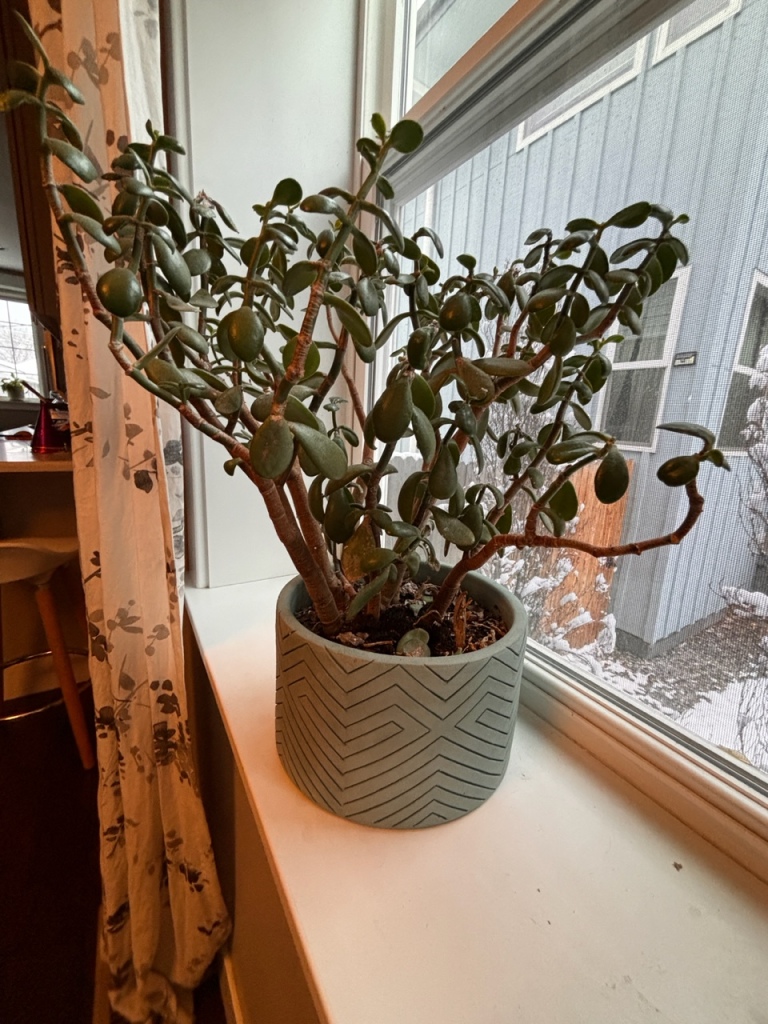By Molly Gaines, CSU Extension – Denver Master Gardener since 2019

On a recent visit to the Cozens Ranch Museum in Fraser, a red and green-leafed begonia in a windowsill, flooded with afternoon sunlight, caught my eye. I walked over for a closer look, and a sign next to the plant shared its special history. It was propagated from an angel wing begonia plant that had been in the Cozens’ family since the late 1800s!
In the late 1990s, when my husband and I were moving into our first home, my husband’s grandma gave us a cutting from her pothos plant. We’ve had that plant now for 25 years, and we’ve propagated countless other plants from its cuttings for our home and as gifts for friends and family. While arguably more pedestrian than an angel wing begonia, it’s special to us since it came from someone we dearly love.
Generational Plant Ideas
Are you interested in nurturing a special heirloom plant, one that tells a story and can be passed down through your family for generations? If so, below are a few good options. For a detailed list of plants that are easy to propagate, along with propagation methods for various house plants, read this wonderful article from Iowa State Extension. Of course, videos are a terrific way to learn various propagation methods, and you’ll find an abundance of them through a quick YouTube search.
Pothos
Because it is so simple to grow and easy to propagate, pothos is an excellent heirloom plant choice, according to the University of Wisconsin-Madison Extension. It can survive in a variety of environments, making it a good option for young adults who are likely to move from place to place. It does like filtered light, rather than direct, and well-aerated soil. Through the years, I’ve propagated too many to count. And my own kids have beautiful plants from these cuttings that they can someday place in their homes. Our pothos will always make us think about my husband’s special grandmother, Neva.

Spider Plant or Airplane Plant
Like pothos, spider plant is great for beginners and thrives in indirect sunlight with water as needed, according to the individual plant’s dryness. According to CSU Extension, spider plants have the added benefit of cleansing a home of toxic gases. They quickly outgrow their pots, requiring frequent dividing and repotting. These plants live an average of 20 years.
Christmas Cactus
While you may not be ready to think about Christmas cactus in February, keep this plant in mind next December. It can be a festive heirloom that makes the holiday season feel even more special. Christmas cactus can live to be more than 100 years old!
According to the University of Minnesota Extension, these plants do require considerable attention for optimal blooms and growth. They are “short-day plants,” which means they produce flower buds as daylight decreases in the winter months. Christmas cactus like cool nighttime temperatures.

Jade Plants
Similar to Christmas cactus, jade plants can live for a long time, 50-100 years. These plants are simple to propagate, making them ideal for gifting or passing down to others. Easy to grow, jade prefers full to partial sun, a south-facing window, and at least four hours of direct sunlight daily. That said, I’ve had a fairly healthy jade plant for a decade that is rootbound, only receives indirect sunlight, and sits in a north-facing window. Jade should be planted in a succulent potting mix and watered only when soil is dry, according to Penn State Extension.

I’ve offered a few ideas here for plants to pass along, but there are many more. As someone who loves plants, I like the thought of some of my special plants finding a home with my grandkids yet-to-be. Just as we pass down special jewelry, dishes and other items, houseplants can serve as special reminders of memories and people we hold close to our hearts. They are a way for us to remember the generations of family who came before us. Do you already have a special plant in your home that you could propagate for future generations?
As always, we’re grateful to you for reading our blog. CSU is available with gardening advice at the CSU Extension Yard and Garden website.
































